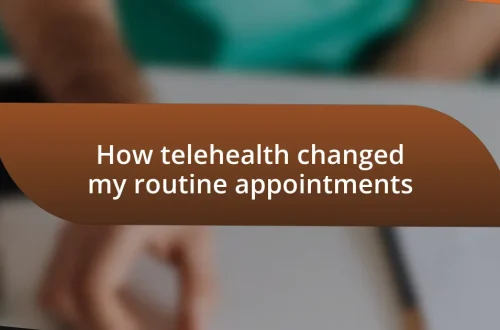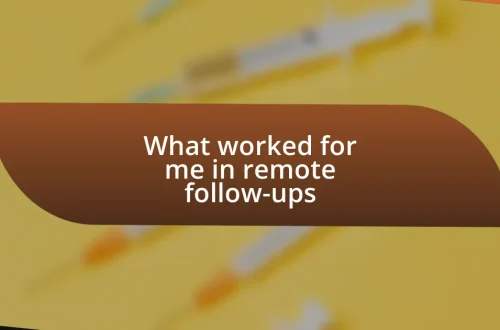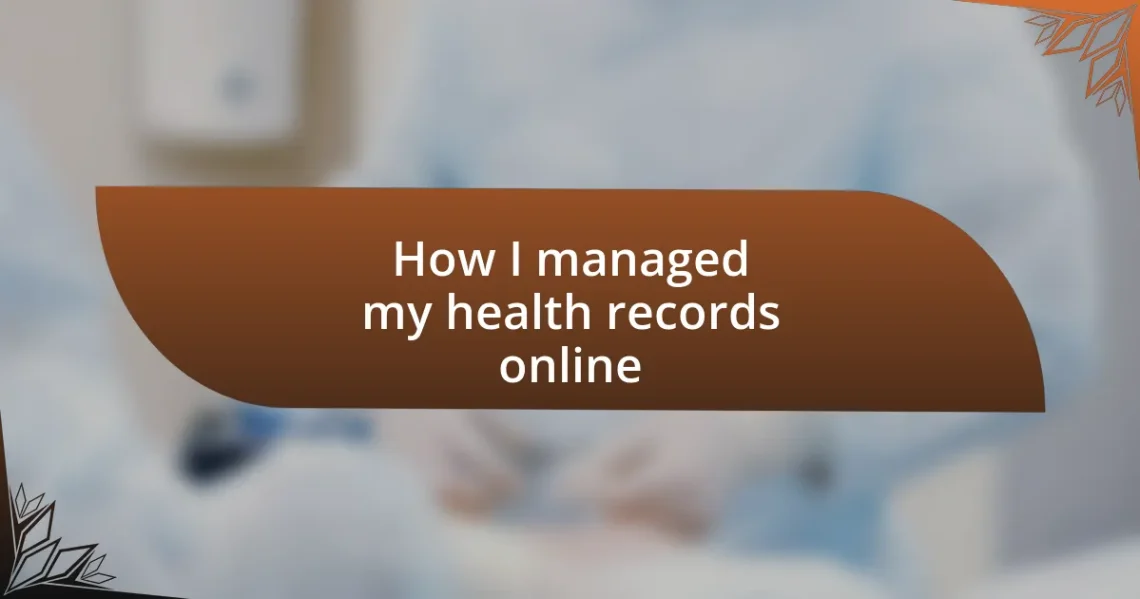
How I managed my health records online
Key takeaways:
- Managing health records online enhances personal control, reduces anxiety, and improves communication with healthcare providers.
- Selecting a user-friendly and secure platform is crucial, with reliable customer support being an invaluable feature.
- Digitizing documents involves sorting, scanning, secure storage, and regular updates to maintain an organized health record system.
- Consistency in updating health records and leveraging technology, such as mobile apps and alerts, plays a vital role in effective health management.
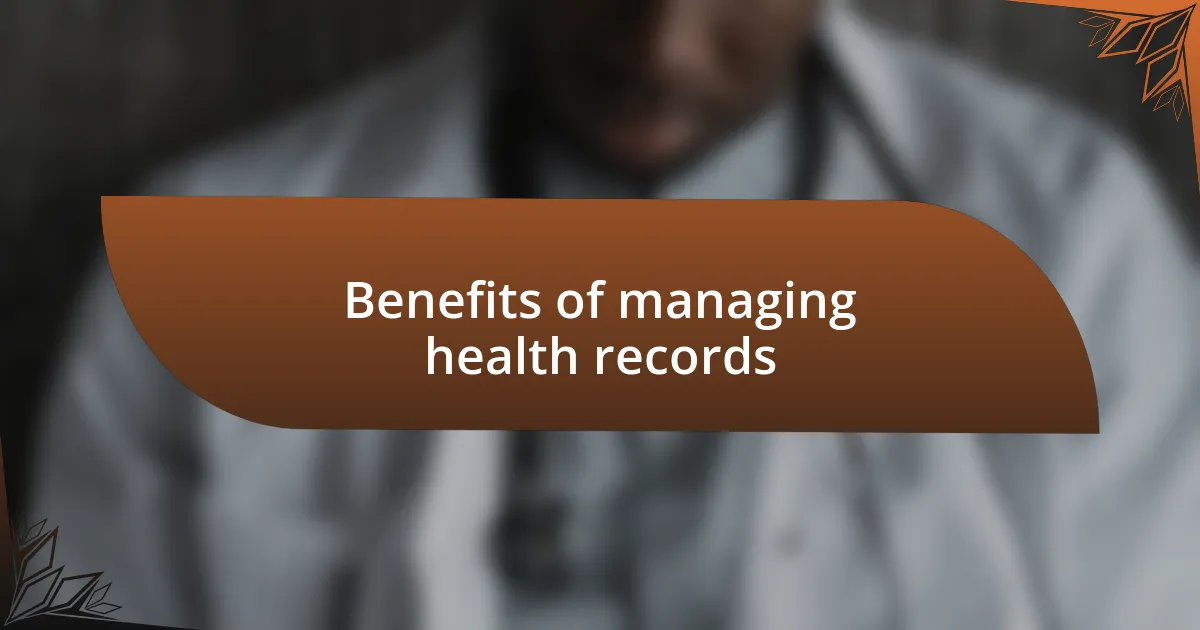
Benefits of managing health records
Managing health records online has brought me a sense of control over my well-being. I remember a time when I had to dig through stacks of paper to find my vaccination history before a trip. Now, I can access all my information in seconds, which not only saves time but also reduces anxiety about missing important health data.
One significant benefit I’ve noticed is the ability to easily share records with different healthcare providers. During my last check-up, I simply sent over my updated medical history through the patient portal. That seamless exchange not only improved the efficiency of my appointment but also allowed my doctor to make more informed decisions about my treatment.
Additionally, having my health records at my fingertips has made me more proactive about my health. I often ask myself, “Do I really know my health status?” With online access, I can review and track my progress, revisit past test results, and set health goals. This empowerment motivates me to stay on top of my health, ensuring I make choices that align with my well-being.
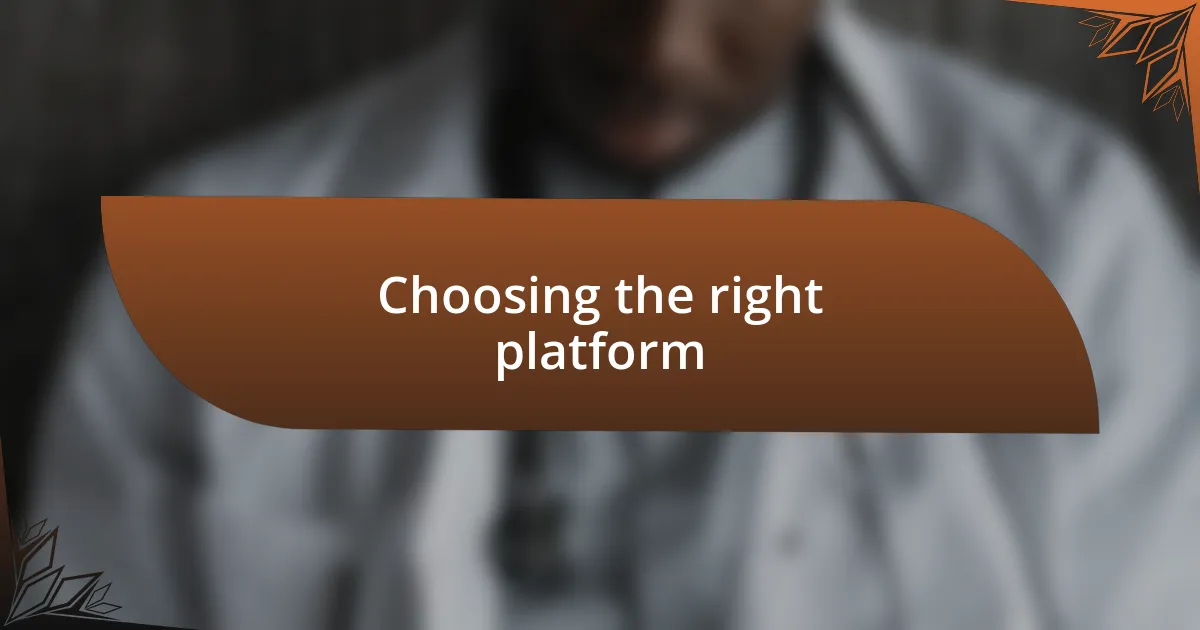
Choosing the right platform
When it comes to choosing the right platform for managing my health records online, I found the process surprisingly overwhelming at first. Each platform seemed to offer a different set of features. I focused on usability, security, and integration options—especially since I often juggle multiple healthcare providers. It was crucial for me to select a platform that felt user-friendly and secure enough to protect my sensitive data, so I could focus on my health without any added stress.
I’ve personally tested a couple of platforms, and I quickly realized that some offered better customer support than others. Once, I needed help navigating an issue with my records. I reached out to customer service, and the response time varied widely. Where I found responsive support, I felt more at ease trusting that platform with my records. I truly believe that having reliable customer support is an invaluable feature, especially during those moments when you need guidance.
To break it down, I created a quick comparison of a few popular platforms that can help simplify your decision-making process. I hope you find it helpful!
| Platform | Features |
|---|---|
| HealthVault | Customizable health records, easy sharing options |
| MyChart | User-friendly interface, strong customer support |
| Apple Health | Integration with other health apps, guaranteed security |
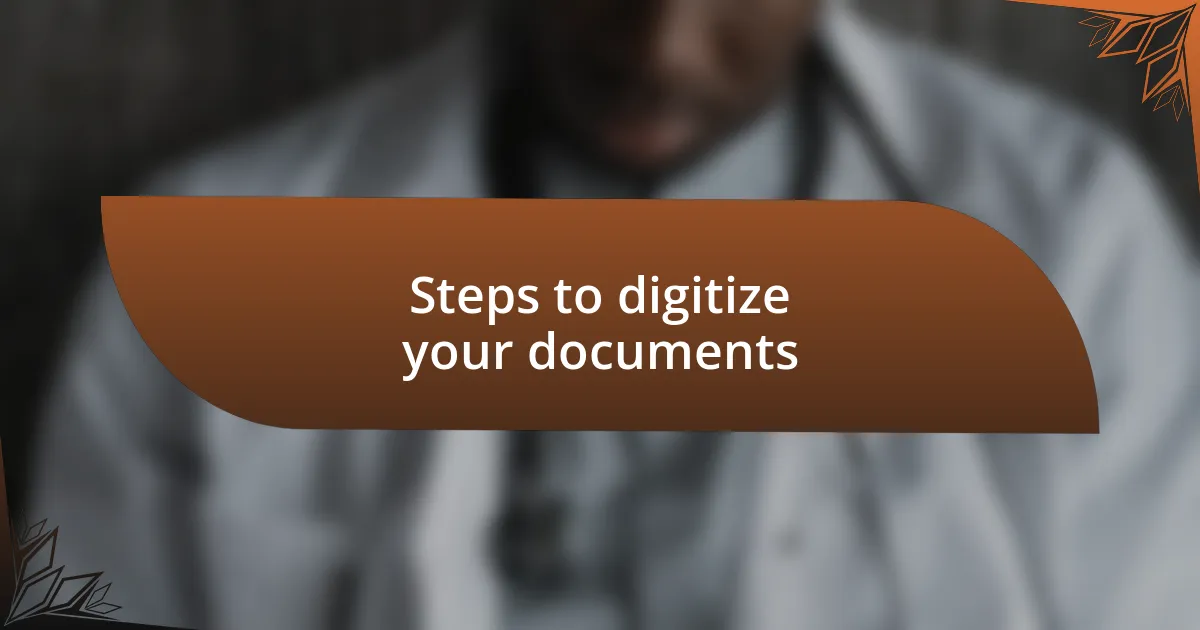
Steps to digitize your documents
To digitize your health documents effectively, I found that the process can be both enlightening and a bit daunting. First, gather all your physical records in one space—this helps you organize your thoughts and avoid that overwhelming feeling of having scattered paperwork everywhere. I remember sitting at my dining table, piles of papers stacked around me, feeling a mix of determination and slight anxiety, but knowing that this step was essential to streamline my health journey.
Here’s a straightforward list to guide you through digitizing your documents:
- Sort and Prioritize: Organize your records into categories like medical history, prescriptions, lab results, and immunizations. This helps you know exactly what you’re dealing with.
- Scan Documents: Use a high-quality scanner or a scanning app on your smartphone. I found that taking the time to ensure clarity made a significant difference when reviewing documents later.
- Save and Back-Up: Save files in a secure cloud storage service, making sure that it’s accessible only to you. During my experience, I lost some critical files because I didn’t back them up—learn from my mistake!
- Label and Tag: Clearly label your documents with descriptive names and tags. This small practice will save you time when searching for specific records in the future.
- Regular Update: Make it a habit to scan and upload new records as soon as you receive them. I’ve learned that staying on top of this process prevents backlogs and reduces the chance of losing important health information.
Digitizing your documents may feel overwhelming, but it’s a clear step towards taking control of your health. Each effort you put in makes a significant impact on your health management down the line.
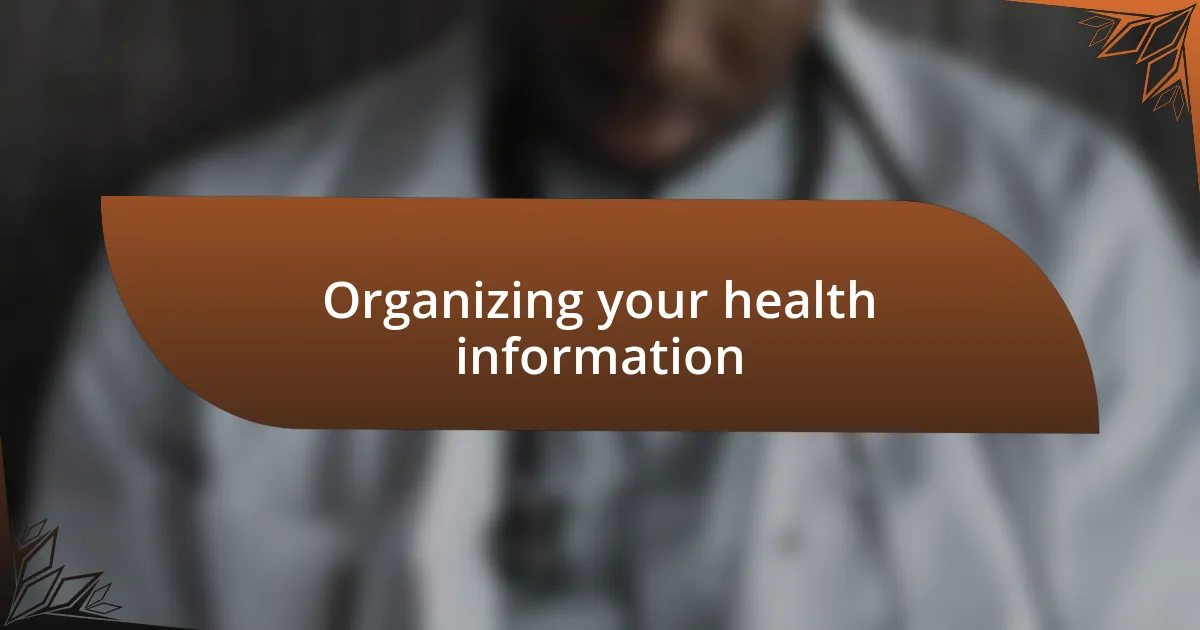
Organizing your health information
Organizing your health information was a revelation for me. Initially, I didn’t realize how much clarity it could bring until I had everything laid out in an organized manner. When I began categorizing my documents, I felt an immense sense of relief, almost like lifting a weight off my shoulders. Have you ever experienced that moment of clarity when everything finally makes sense? It was a turning point in managing my health.
To make the information more accessible, I started creating a digital folder system that mirrored my physical filing approach. I remember the satisfaction of naming each folder intuitively; it’s something I thought was trivial at first but later proved essential. For instance, having separate folders for each family member helped streamline our access to critical documents during appointments, especially in urgent situations. Knowing where everything is located brings peace of mind and saves time when you need it most.
Regular maintenance became another key aspect of my organization process. I designated a monthly time slot to review my digital files, which kept everything updated and ensured I didn’t encounter any surprises during doctor visits. In that quiet hour, I would check for new documents, update records, and even reminisce about past medical journeys. It sounds simple, but truly engaging with my health information made me feel more in control of my well-being. How do you keep your health information in check?
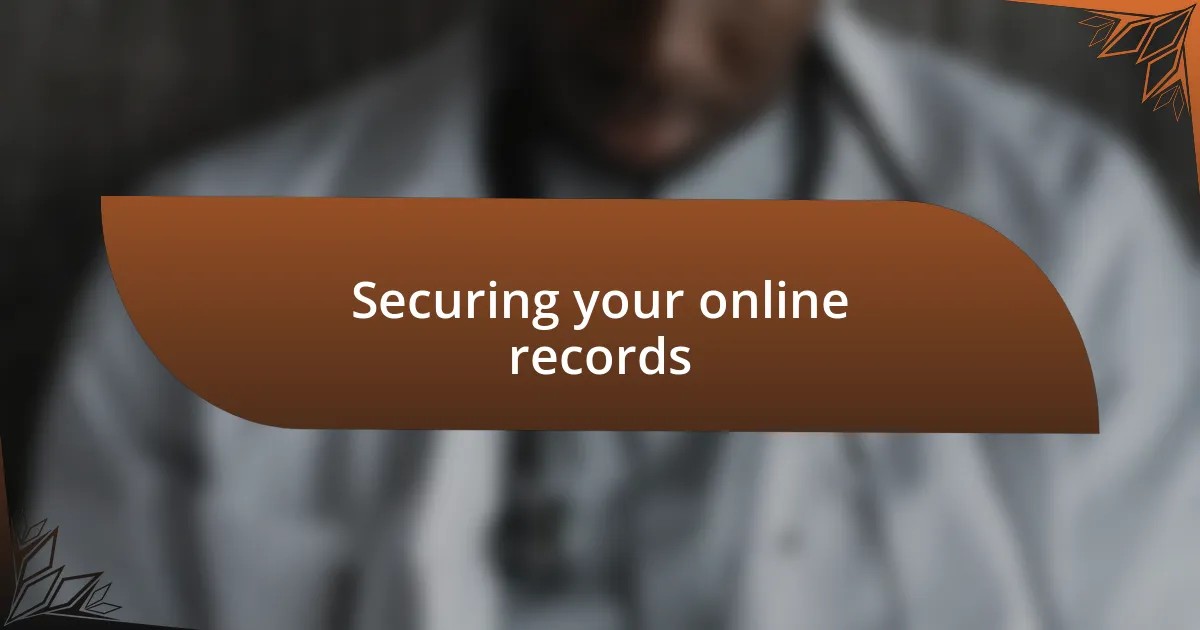
Securing your online records
Securing your online health records starts with choosing the right platforms. When I initially began managing my health information online, I felt overwhelmed by the number of options available. I had to remind myself that not all platforms are created equal. I personally opted for a service with strong encryption protocols and two-factor authentication. It was a small step that made a big difference; knowing my information was safe eased my anxiety about potential data breaches.
Another vital element in my security strategy was being diligent about my passwords. I remember the frustration of forgetting complicated passwords, but I learned the hard way that using unique, strong passwords for each site was essential. Embracing a password manager proved invaluable for me. It not only kept my login details secure but also saved me countless hours searching for that one elusive password. Have you ever thought about how much time you might waste forgetting passwords?
Lastly, I realized the importance of actively monitoring my accounts. I began setting aside a few minutes each week to check for any unauthorized access or unusual activity. I can still feel the nervous flutter in my stomach from that one time I noticed a login attempt from an unfamiliar location. Thankfully, by being proactive, I quickly changed my password and added extra security measures. It was a wake-up call that reminded me how crucial it is to stay vigilant about my online privacy.
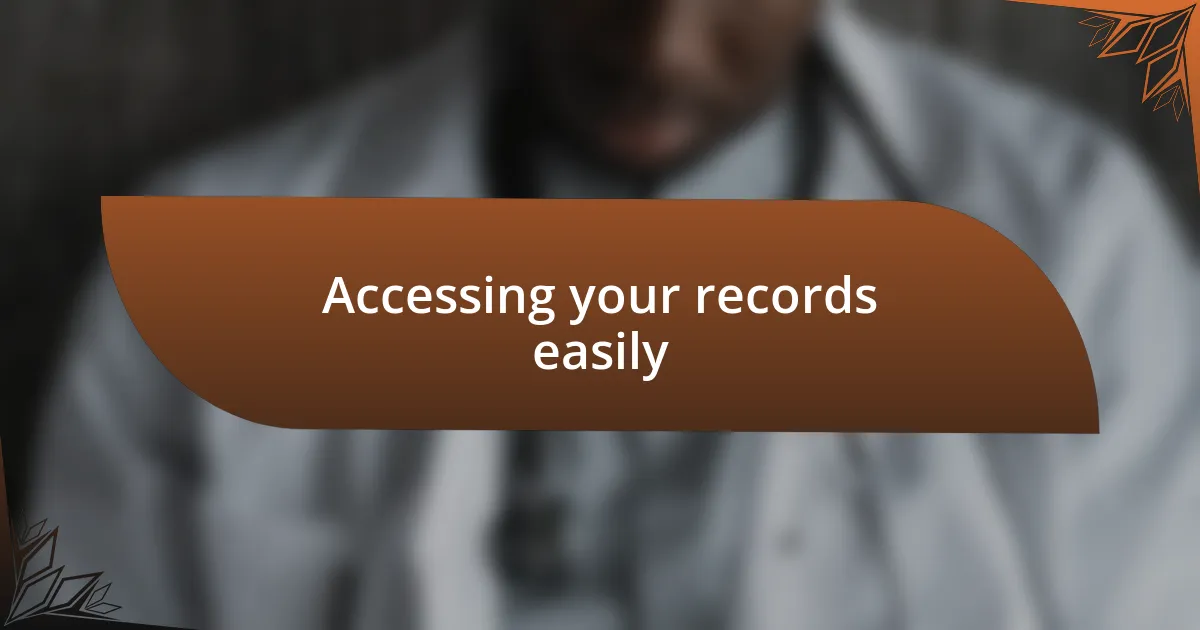
Accessing your records easily
Accessing my health records online became easier once I understood how to navigate the platforms effectively. Initially, I found myself frustrated, hopping between different sites to gather information. However, I discovered the joys of using integrated health management systems that brought everything together. Have you ever experienced that “aha moment” when everything clicks? For me, it was breathtaking to see all my medical history in one place, from lab results to vaccination records.
I also learned that taking advantage of mobile apps made checking my records a breeze. I remember sitting in a waiting room, feeling anxious about an upcoming appointment. Instead of twiddling my thumbs, I opened the health app on my phone and reviewed my information right there. It was empowering to have my history literally at my fingertips. It made me feel more involved in my healthcare decisions, and I often wonder how many people miss out on this ease of access simply because they haven’t explored these technologies yet.
Establishing alerts for updates to my records has also been a game changer. I used to feel completely uninformed about changes or new test results, but now I receive notifications that keep me in the loop. I vividly recall the relief I felt when I got an alert about a lab result, allowing me to discuss it with my doctor before even stepping into the office. Doesn’t it feel good to be proactive about your health? By taking these small steps, I’ve crafted a smoother path to accessing my health records effortlessly.
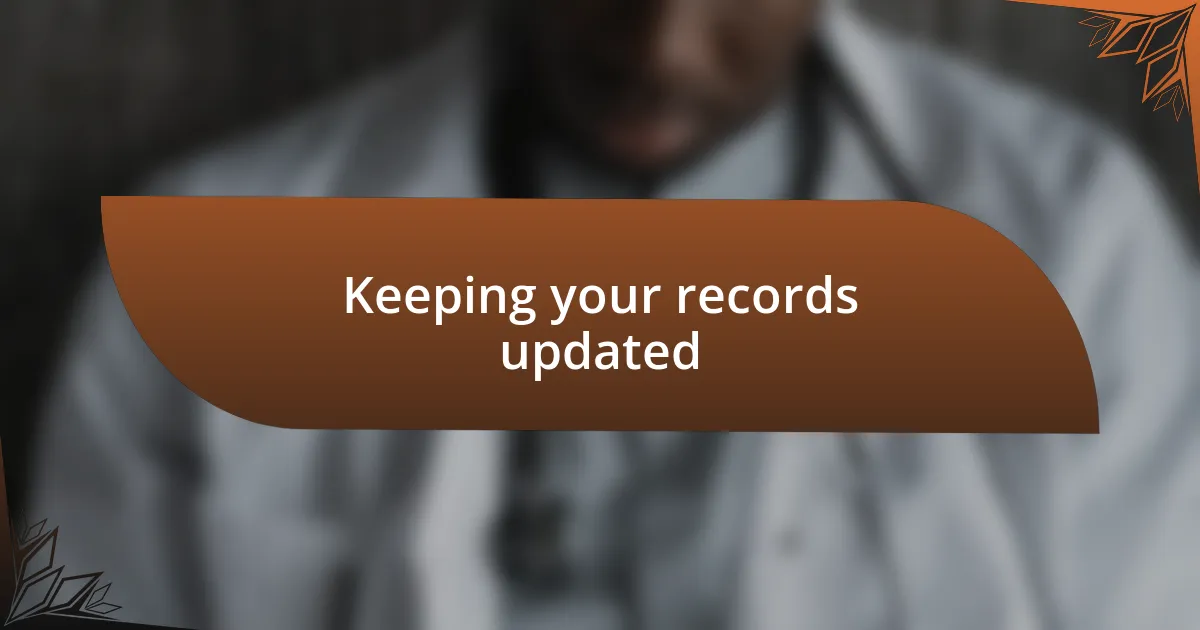
Keeping your records updated
Keeping your health records up to date can feel daunting, but I’ve found that small, consistent actions make a world of difference. Each time I visit a doctor or get any treatment, I take a moment to input that information into my online health record. It’s a simple habit, yet it gives me an immense sense of control. Have you ever had a doctor ask you about past procedures that you couldn’t recall? It’s a frustrating experience that I’ve worked hard to avoid.
I remember a specific instance when I received a new prescription. Instead of waiting for my next appointment to clarify everything, I updated my records immediately after I got home. This timely entry not only helped me keep track of my medications but also gave me peace of mind. It’s a proactive strategy that allows me to consult my health history confidently whenever needed. How often do we overlook the power of being well-organized?
Don’t underestimate the importance of regular updates, either. I set up a personal reminder every few months to review my records and ensure everything is accurate. The first time I did this, I discovered discrepancies in my weight and allergy list that could have led to serious consequences. It was a wake-up call for me. Maintaining an accurate account of my health isn’t just about convenience; it’s about safeguarding my well-being.


